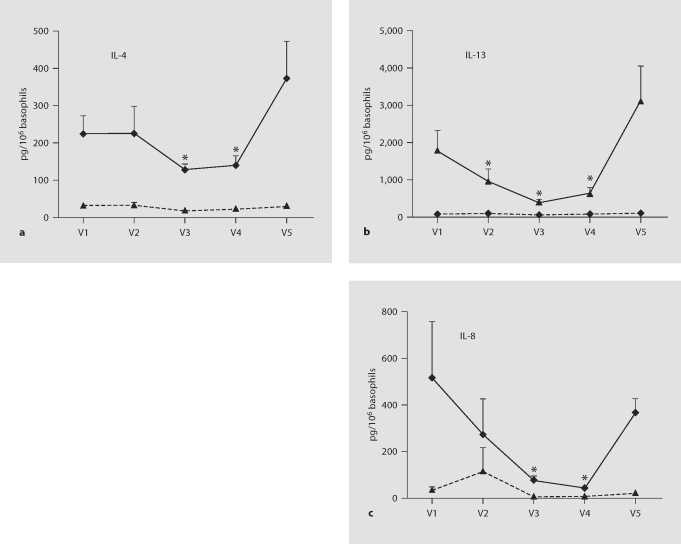Fig. 2.
Omalizumab inhibits anti-IgE-mediated IL-4, IL-13 and IL-8 production. Basophils were isolated by Percoll gradient centrifugation followed by negative selection from 9 volunteers before, during and 6 months after a 12-week course of omalizumab. Cells were incubated for 4 h without (dashed lines) or with (solid lines) 1 μg/ml anti-IgE. Supernatants were analyzed by ELISA for IL-4 (a), IL-13 (b) and IL-8 (c) production. Repeated measures ANOVA comparing between treatment groups confirmed that anti-IgE stimulation causes a substantial increase in the synthesis and release of all 3 mediators (p < 0.001 for IL-4; p = 0.006 for IL-13; p = 0.009 for IL-8). Further ANOVA comparing across the time course of treatment confirmed that omalizumab significantly alters anti-IgE-stimulated mediator production (p = 0.03 for IL-4; p < 0.001 for IL-13; p < 0.001 for IL-8). Asterisks mark the specific time points when omalizumab significantly reduced anti-IgE-stimulated mediator production (results of paired t tests yielding p < 0.05 in comparison with pre- and posttreatment cytokine production).

